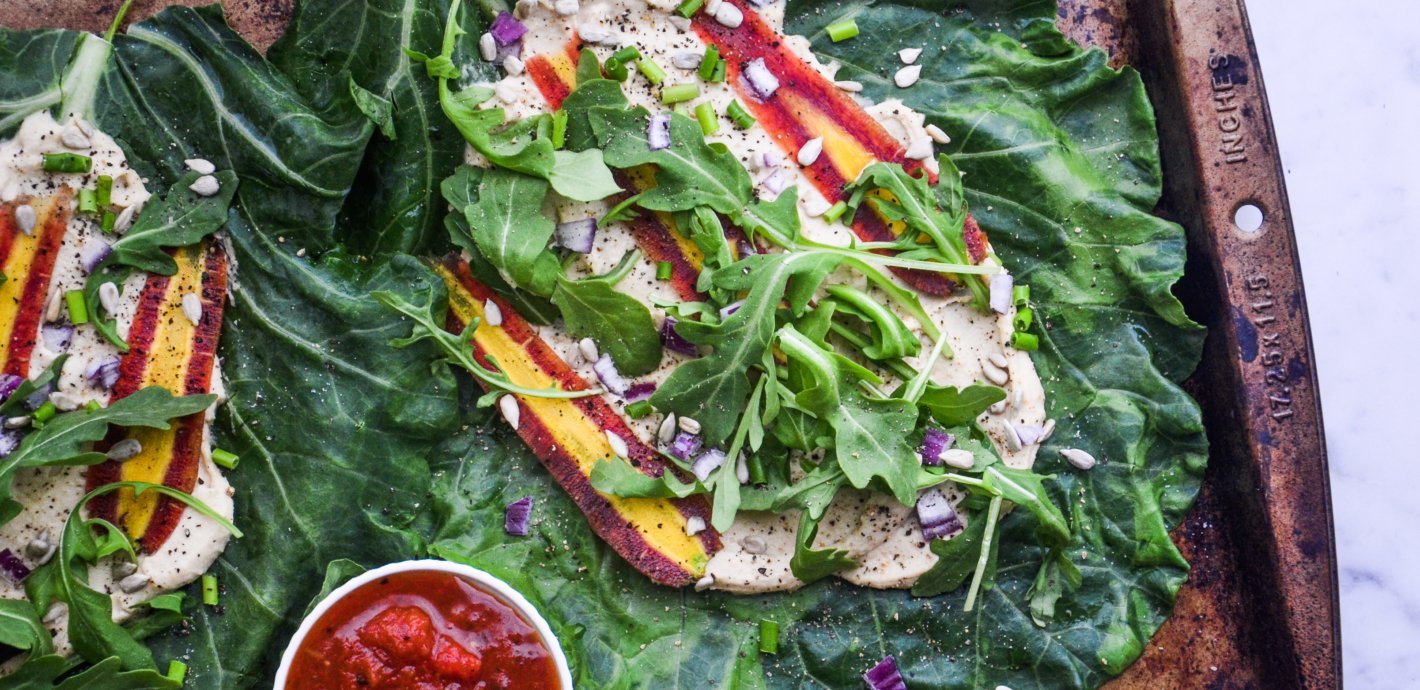The keto craze shows no signs of slowing, let alone stopping. Even if you don’t have a friend or coworker who is following the diet, you have probably seen “keto-friendly” products in the supermarket, headlines online, and ketogenic diet posts in your social media feeds. You can certainly find a lot on this trend, including information that makes it seem beneficial as well as evidence warning you against trying it. In all this confusion, it’s important to examine what we know—and don’t know—about this particular eating style before you fill your fridge (and belly) with fats.
The ketogenic, or keto, diet originated as a treatment for epilepsy, but in recent years, it has been tied to weight loss. The plan is high-fat and low-carb. That sounds a lot like Atkins or other low-carb programs, but keto typically has a higher fat-to-protein ratio. Although you can find different versions of the diet, most ketogenic plans recommend a 4:1 ratio of proteins to carbs and consuming about 5 to 10 percent of your calories from carbs, 20 to 25 percent from proteins, and 70 to 80 percent from fats.
Going this low-carb and high-fat puts your body into a state of ketosis. This is a metabolic process where, since your body isn’t getting adequate glycogen to burn, it burns fat instead, which actually produces a ‘cleaner’ energy than glucose. Proponents say this helps you lose weight, improve insulin sensitivity, boost mental and exercise performance, keep your brain sharp, and more.
The ketogenic diet tends to get a bad rep because, for most people, it is difficult to sustain. However, it could be a way to help you cut out less healthy foods, such as sugars and processed carbs (things most of us eat too much of), and begin to eat more vegetables.
The keto plan calls for:
- healthy fats such as avocado, ghee, butter, coconut, olive oil, nuts and seeds, nut and seed butters
- full-fat dairy
- fish, eggs, poultry, beef, pork, and organ meats
- some fruit, such as berries
- non-starchy vegetables such as spinach, kale, cucumbers, broccoli, cauliflower, brussels sprouts, mushrooms, and asparagus
Of course, these foods have benefits and these fats have proven to be heart-healthy. And while full-fat dairy may be favorable for weight loss, we all know the more vegetables we consume, the better. When it comes to proteins, the ketogenic diet recommends fattier choices such as skin-on poultry, chicken thighs, salmon, bacon, and grass-fed ground beef and rib-eye steak. However, I encourage eating grass-fed and pasture-raised poultry and meat, wild fish, and not too much processed meat. (Go easy on the bacon.)
Related: Making Sense of the Science on Fat
Vegetarians and vegans don’t have to miss out on this trend. It is possible to follow a plant-based version, however, this tends to make it harder. Keto- and vegan-friendly foods include: coconut oil, coconut cream, coconut milk, avocado, plant-based oils, nuts, seeds, berries, and non-starchy vegetables.
Aside from focusing on whole foods, health claims about the ketogenic diet are still unclear. There is no standardized keto diet used in studies, and most are short-term trials. We need long-term studies to properly assess if the diet is not only safe and effective for weight loss, but also safe to be a lifestyle. There have also been studies on the ketogenic diet’s impact on neurological diseases, mental disorders, type 2 diabetes, and cancer patients. But here again, we need more research and more human studies to verify any claims that the diet helps with these conditions.
In addition to the lack of substantial scientific support, many experts have more concerns than praise about the ketogenic diet. In fact, U.S. News and World Report ranked the ketogenic diet nearly dead last (#39 out of 40) on its most recent Best Diets list, saying it can be extreme, which can make it hard to follow long-term. And while some keto plans recommend following the diet off and on for a few weeks at a time, that also can be challenging, as it takes discipline to cycle your diet.
Another warning: Anytime you go on the diet, you may experience what is referred to as “keto flu”. This tends to last a week or two as your body adjusts to ketosis. Symptoms may include low energy, bad mood, nausea, headache, dizziness, mental fog, constipation, and other flu-like symptoms. Once your body adapts, however, these side effects should dissipate.
Still, we don’t yet know the long-term effects of maintaining the ketogenic diet. Anyone living with diabetes and taking insulin or oral hypoglycemic agents should talk to their doctor before trying this extreme plan. Also, women who are pregnant should not go keto because the ketosis state could be potentially dangerous to the baby’s growth and neurological development.
Bottom line: There’s much to be discovered about the keto diet that’s not for everybody, but if you’re curious, it might be worth a try. Several dozens of my patients have been on the ketogenic diet for at least two years—some as many as five years—and they are in remarkable health with excellent metabolic biomarkers. If you are eager to learn more and understand the challenges of going keto, try it and see how you feel.
Below is a gluten-free, vegan-friendly recipe following the keto principles from Sonima’s resident chef, Amie Valpone, who adds: “I know the thought of eating enchiladas wrapped in leaves sounds very odd, but trust me. I’ve been serving variations of this recipe to all my guests—vegetarian, keto and paleo friends alike—and they love how light and delicious these enchiladas are. The best part about these enchiladas is the creamy almond ‘cheese’ that’s dairy-free, of course (it’s made from magnesium-rich almonds, which lend a hearty dose of protein to this meal). The spicy arugula is my go-to detoxifying cruciferous vegetable that’s easy to digest, unlike broccoli and cauliflower, which can make you gassy. Meat-eaters, we have an easy grass-fed bison add-on option for you below!”
No-Bake Keto Enchiladas
Ingredients
1 head collard greens
1 large carrot, peeled and thinly sliced
1 cup fresh arugula
2 tablespoons red onion, diced
2 chives, thinly sliced
1 tablespoon sunflower seeds
Sea salt and pepper, to taste
Creamy Almond “Cheese”
1 cup whole almonds, unsalted and blanched
Juice of ½ large lemon
2 ½ tablespoons extra virgin olive oil
1 clove garlic
¼ cup room temperature water, plus more as needed for desired thickness
½ teaspoon sea salt
Easy Enchilada Sauce
1 teaspoon extra-virgin olive oil
1 cup finely chopped red onions
1 tablespoon chili powder
2 teaspoons ground cumin
2 teaspoons garlic powder
1 teaspoon dried oregano
½ teaspoon sea salt, plus more if needed
½ teaspoon pepper
½ cup vegetable broth
Directions
For the Enchiladas:
- Blanch the collard green leaves one at a time in a large pot of boiling water with a large pinch of sea salt. Make sure to keep the stem out of the pot of boiling hot water so that you can use the stem to hold onto the collards while each leaf is blanching.
- Blanch each of the collard leaves for 20 seconds each, then holding the stem, remove each leaf from the boiling water and immediately place it in a large bowl of ice water for 30 seconds.
- Remove from the ice water and lay the leaf on a large kitchen towel to dry. Repeat with the remaining collard green leaves and set aside.
For the Creamy Almond Cheese:
- Soak almonds in a bowl of boiling hot water for 30 minutes, then drain, rinse well and pat dry with a kitchen towel.
- Combine all ingredients in a small food processor and blend until very smooth, about 5 minutes, depending on the size of your food processor.
- Scrape down the sides of the processor as needed. Add more water if you desire a thinner spread consistency.
- Season to taste with more sea salt, if needed. Store leftover “cheese” in a sealable container in the refrigerator for up to 4 days.
Pro Tip: Pressed for time? No worries. You can make the enchilada sauce, the “cheese” and the ground bison the night before serving this recipe, if desired. However, the actual enchiladas should be made right before serving. If you decide to make these ahead of time, simply heat up the ground bison in a small skillet and the enchilada sauce in a small saucepan for 5 minutes on the stovetop over medium-low heat before adding to the enchiladas.
For the Enchilada Sauce:
1. In a large skillet over medium heat, add the oil and onions. Sauté for 5 to 7 minutes, or until the onions are translucent.
2. Add the spices, sea salt and pepper, stir and sauté for 3 minutes, or until fragrant. Add the vegetable broth and cook for 10 minutes. Remove from the heat and serve warm. Store leftover sauce in a sealable container in the refrigerator for up to 4 days.
Assemble the Enchiladas:
- Lay the collard greens face up on a cutting board and remove the ends with a sharp knife.
- Spread the “cheese” onto the collard greens and top with the carrot slices, arugula, onion, chives and sunflower seeds.
- Season to taste with sea salt and pepper.
- Spoon the enchilada sauce on top and roll each collard green like a burrito and serve immediately. Slice the wrapped collards in half width wise if desired, for serving.
**Meat Alternative: If you prefer a heartier recipe, you can cook ½ pound grass-fed ground bison in a large skillet with 1 tablespoon extra-virgin olive oil, ¼ teaspoon sea salt and ¼ teaspoon pepper over medium heat for 10 minutes, covered, stirring often or until the meat is fully cooked and no longer pink inside. Spoon the ground meat onto the enchiladas before adding the carrots.
Yields
Serves 2-4









Comments (0)